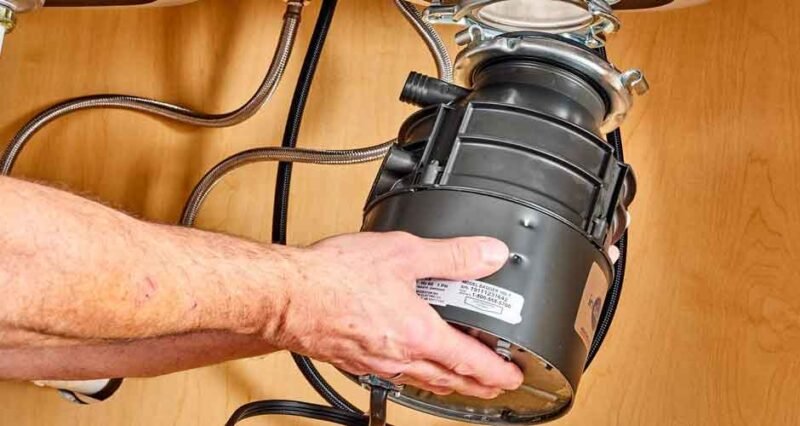
Garbage disposals are indispensable in modern kitchens, efficiently managing food waste and maintaining cleanliness. However, these devices can sometimes encounter problems, like leaks around the reset button. This article delves into the primary causes of garbage disposal leaking from reset button, providing insights to help homeowners understand and address the issue.
Understanding the Reset Button’s Role
Found at the bottom of most garbage disposals, this button serves as a safety feature. It trips when the disposal faces mechanical or electrical issues, preventing damage. Pressing the reset button restores power to the unit once the underlying problem is resolved.
Common Causes of Leaks Near the Reset Button
- Worn Out Seals or Gaskets: The most frequent cause of leaks near the reset button is the deterioration of seals or gaskets. These components, made of rubber or similar materials, can wear out over time, leading to water seepage.
- Loose Connections: Occasionally, the connections around the disposal may loosen due to vibrations during operation. This can create gaps through which water can leak.
- Cracks in the Housing: Physical damage to the garbage disposal, such as cracks in the housing, can be a direct source of leaks. Such damage might occur due to impact, aging, or manufacturing defects.
- Internal Plumbing Issues: Sometimes, the problem lies not with the disposal itself but with the plumbing connected to it. Issues like clogged pipes can cause water to back up and leak near the reset button.
Diagnosing and Addressing Leaks
To tackle garbage disposal leaking from reset button effectively, identifying the exact cause is essential. Homeowners can start by inspecting the area around the reset button for any signs of damage or wear. Checking the tightness of connections and the condition of seals and gaskets is a good initial step.
If the issue is not immediately apparent, further investigation into the internal plumbing might be necessary. It’s important to remember that while some problems can be fixed with basic equipment and a bit of know-how, others may require professional assistance.
Preventive Measures and Maintenance Tips
Regular maintenance can prevent many problems with garbage disposals, including leaks. Here are some tips to keep the unit in good working order:
- Regular Cleaning: Keep the disposal clean to prevent the buildup of debris that could lead to clogs and leaks.
- Avoid Hard or Fibrous Foods: Disposing of hard or fibrous foods can strain the motor and lead to damage.
- Use Cold Water During Operation: Running cold water while the disposal is in use helps to solidify fats and oils, preventing clogs.
- Regular Inspections: Periodically check for signs of wear or damage, especially around seals and gaskets.
When to Seek Professional Help
While some garbage disposal issues can be resolved with DIY approaches, there are instances when professional intervention is necessary. If the problem persists after basic troubleshooting, or if there’s significant damage to the disposal, it’s advisable to consult a professional. They can provide a comprehensive diagnosis and carry out repairs safely and effectively.
Conclusion
Leaks around the reset button of a garbage disposal can be a nuisance, but understanding their common causes is the first step towards resolution. These issues can be effectively managed through regular maintenance, careful usage, and timely repairs. Remember, when in doubt, seeking professional advice is always the best course of action to ensure the longevity and efficiency of your garbage disposal system.

